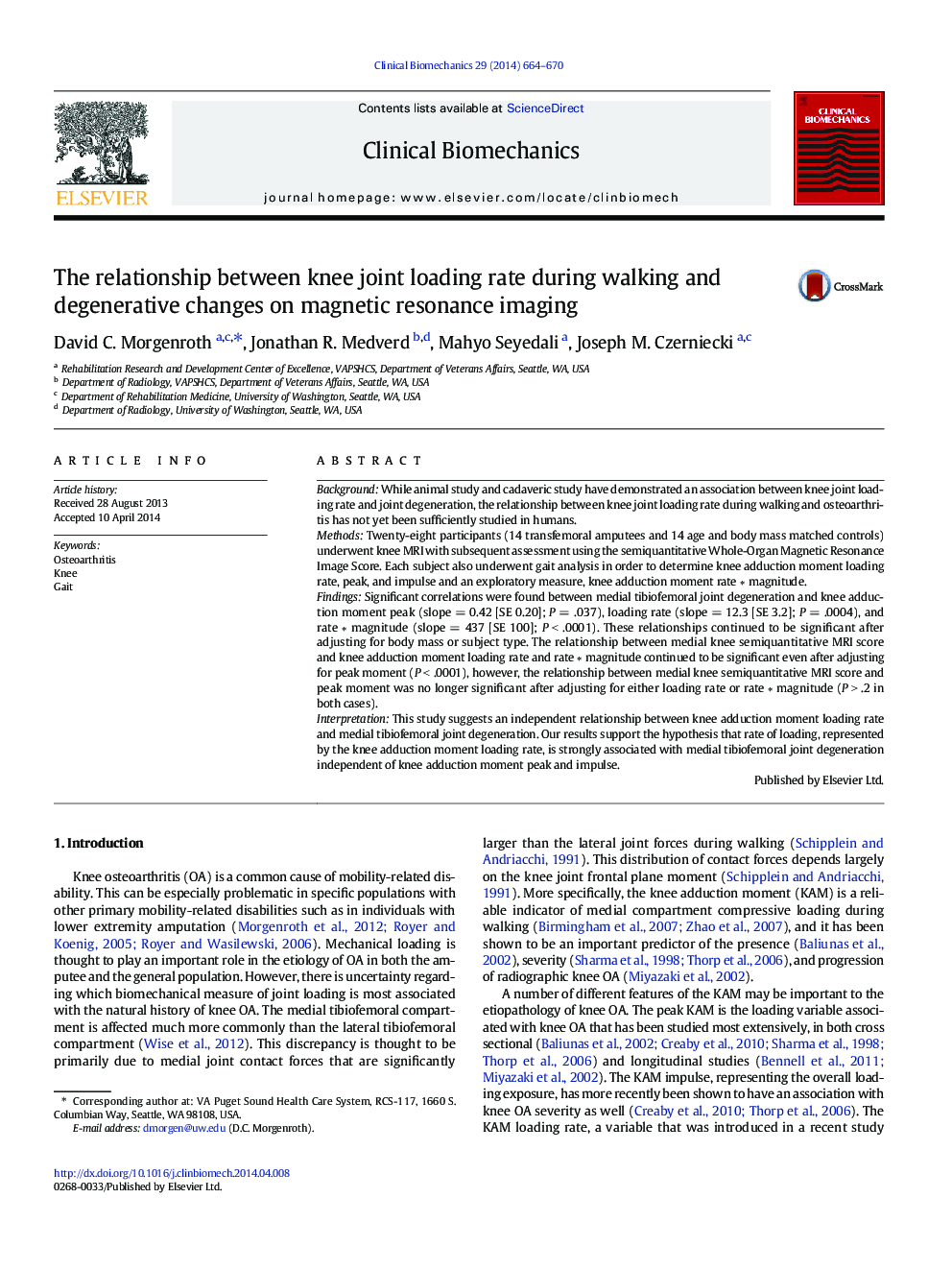| Article ID | Journal | Published Year | Pages | File Type |
|---|---|---|---|---|
| 4050436 | Clinical Biomechanics | 2014 | 7 Pages |
BackgroundWhile animal study and cadaveric study have demonstrated an association between knee joint loading rate and joint degeneration, the relationship between knee joint loading rate during walking and osteoarthritis has not yet been sufficiently studied in humans.MethodsTwenty-eight participants (14 transfemoral amputees and 14 age and body mass matched controls) underwent knee MRI with subsequent assessment using the semiquantitative Whole-Organ Magnetic Resonance Image Score. Each subject also underwent gait analysis in order to determine knee adduction moment loading rate, peak, and impulse and an exploratory measure, knee adduction moment rate ∗ magnitude.FindingsSignificant correlations were found between medial tibiofemoral joint degeneration and knee adduction moment peak (slope = 0.42 [SE 0.20]; P = .037), loading rate (slope = 12.3 [SE 3.2]; P = .0004), and rate ∗ magnitude (slope = 437 [SE 100]; P < .0001). These relationships continued to be significant after adjusting for body mass or subject type. The relationship between medial knee semiquantitative MRI score and knee adduction moment loading rate and rate ∗ magnitude continued to be significant even after adjusting for peak moment (P < .0001), however, the relationship between medial knee semiquantitative MRI score and peak moment was no longer significant after adjusting for either loading rate or rate ∗ magnitude (P > .2 in both cases).InterpretationThis study suggests an independent relationship between knee adduction moment loading rate and medial tibiofemoral joint degeneration. Our results support the hypothesis that rate of loading, represented by the knee adduction moment loading rate, is strongly associated with medial tibiofemoral joint degeneration independent of knee adduction moment peak and impulse.
